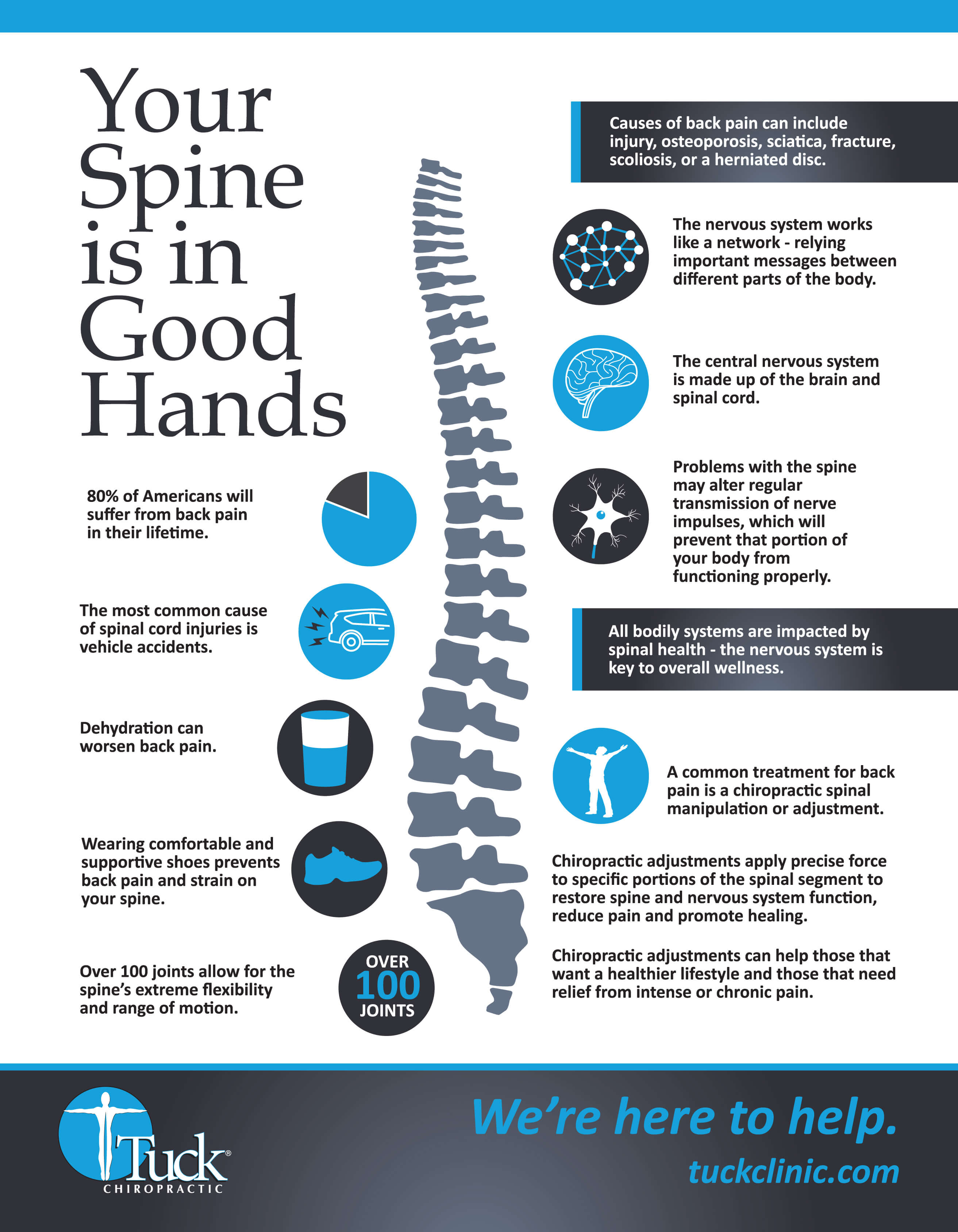The Influence Of Posture On Neck And Back Pain: Exactly How To Preserve Good Alignment Throughout The Day
The Influence Of Posture On Neck And Back Pain: Exactly How To Preserve Good Alignment Throughout The Day
Blog Article
Author-Bush Ritchie
Maintaining correct posture isn't almost staying up directly; it's about straightening your body in a manner that supports your spine and lowers the threat of back pain. The method you rest, stand, and move throughout the day can substantially influence your spinal health and wellness. But how exactly can you guarantee great alignment constantly, even throughout busy days full of different activities? Allow's dig deeper into the subtle yet impactful changes you can make to your daily routine to keep your back delighted and healthy and balanced.
Importance of Correct Position
Correct position is critical in preserving a healthy and balanced back and preventing pain. When you sit or stand with great stance, your back remains in positioning, decreasing strain on your muscular tissues, ligaments, and joints. This placement allows the body to distribute weight uniformly, avoiding extreme anxiety on certain areas that can lead to pain and pain. By keeping your spinal column effectively lined up, you can also boost your breathing and food digestion, as slouching can press organs and limit their functionality.
Furthermore, maintaining great posture can enhance your general appearance and self-esteem. When you stand tall with your shoulders back and head held high, you radiate self-confidence and appear more friendly. Great position can also make you feel more energized and alert, as it promotes appropriate blood flow and enables your muscular tissues to function efficiently.
Including appropriate stance into your daily routine, whether sitting at a desk, walking, or working out, is vital for stopping pain in the back and advertising general wellness. Bear in mind, a little modification in exactly how you hold yourself can make a considerable difference in just how you feel and operate throughout the day.
Common Postural Mistakes
When it concerns keeping great position, lots of individuals unconsciously make common errors that can add to pain in the back and discomfort. Among one of the most prevalent mistakes is slumping over or hunching over while resting or standing. This setting puts excessive stress on the spinal column and can cause muscle mass inequalities and pain in the future.
Another typical error is overarching the reduced back, which can flatten the natural curve of the back and trigger pain. Additionally, crossing https://headandneckinjuryfromcara62849.blogsuperapp.com/31724791/taking-advantage-of-the-recovery-potential-of-your-body-with-chiropractic-care while resting may feel comfortable, but it can create an imbalance in the hips and pelvis, bring about postural concerns.
Using a pillow that's too soft or also strong while sleeping can additionally influence your positioning and contribute to back pain. https://chiropracticfamilyclinic62738.dsiblogger.com/64115991/learn-more-regarding-just-how-chiropractic-treatment-can-benefit-your-pregnancy-and-assist-in-your-postpartum-recovery-with-all-natural-advantages-that-support-your-overall-wellness but not least, constantly craning your neck to look at displays or adjusting your setting regularly can strain the neck and shoulders. Being mindful of these common postural mistakes can help you maintain far better alignment and minimize the danger of back pain.
Tips for Correcting Alignment
To boost your placement and reduce neck and back pain, it's vital to focus on making small adjustments throughout your day-to-day regimen. Begin by being mindful of your pose. When resting, guarantee your feet are flat on the floor, your back is straight, and your shoulders are unwinded. Stay clear of slouching or leaning to one side. Use ergonomic chairs or cushions to sustain your reduced back.
When standing, disperse your weight evenly on both feet, keep your knees a little curved, and tuck in your hips. Engage your core muscles to support your spine. Take breaks to stretch and walk around if you have an inactive task. Integrate workouts that reinforce your core and back muscles, such as planks or bridges.
While sleeping, make use of a pillow that supports the all-natural contour of your neck to maintain correct spine placement. Stay clear of sleeping on your stomach, as it can strain your neck and back. By bearing in mind these ideas and making small changes, you can progressively correct your placement and minimize pain in the back.
Verdict
Remember, keeping excellent position is key to stop pain in the back and promoting spinal health and wellness. By being mindful of your alignment, dispersing weight uniformly, and engaging your core muscles, you can minimize pressure on your back and reduce the danger of pain and injury. Incorporate ergonomic assistance, take regular breaks to stretch, and strengthen your core and back muscles to maintain appropriate positioning throughout the day. Your back will thank you for it!
